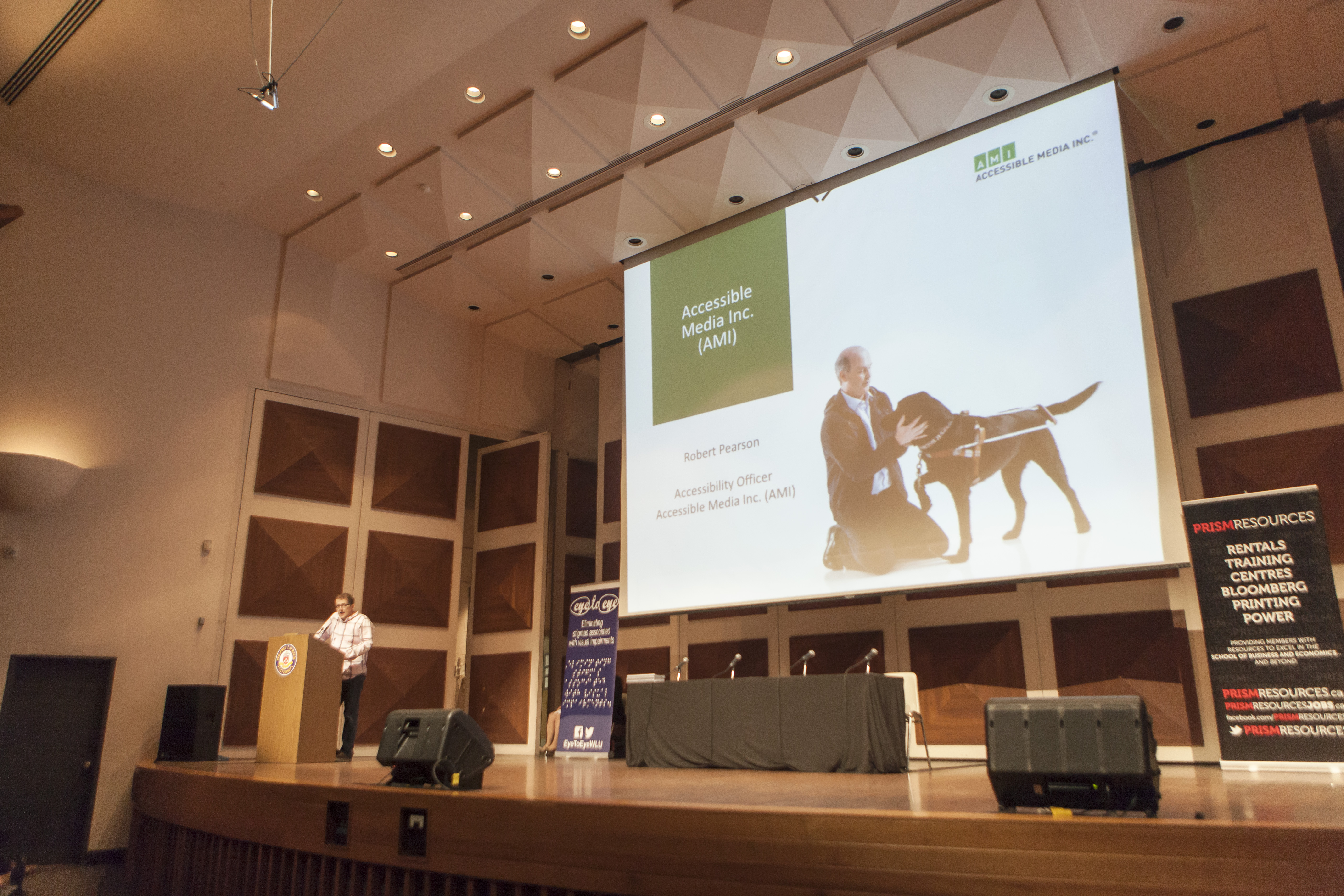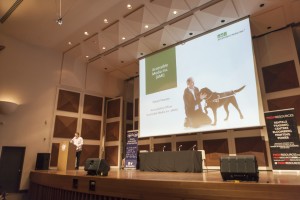Removing obstacles from visual impairment

The Insight to No Sight event, hosted by the Eye to Eye club, focused on the importance of disability accessibility.

Don’t let obstacles stand in your way.
This was the main message communicated by speakers at the Insight to No Sight event held at Wilfrid Laurier University on Sept. 17. The event was aimed at removing stigmas around visual impairment, but also discussed the importance of accessibility in regard to all disabilities.
The event was hosted by Wilfrid Laurier University Students’ Union club, Eye to Eye.
“From coming here today I want everyone to realize the importance of empowerment in incorporating people with disabilities into society and giving everyone the opportunity to reach their level of success that they can achieve,” said Jack McCormick, co-founder of the club.
Dana Toameh, co-founder with McCormick, emphasised the change in perspective people need to take with regard to those with disabilities.
“Those who are visually impaired are not less than those of us who can see,” she said. “We just happen to do things in a different way and adapt and approach situations differently.”
Around 50 people attended the event, including professors, staff, community members and representatives from the Canadian National Institute for the Blind.
According to Mahadeo Sukhai, Canada’s first blind biochemical researcher and senior advisor at the National Education Association of Disabled Students, statistics show that one in 14 post-secondary students have a recognized disability they disclose to their accessibility services. While he said universities still have a ways to go, they’ve made strides, demonstrated by an increase in acceptance rates and graduation rates for people with disabilities.
However employment is where the trends are lagging.
“19 out of every 20 who identify as being blind or partially sighted will either be unemployed or not be employed at the level they are trained to be employed at,” he said.
Robert Pearson, accessibility officer for Accessible Media Inc., explained that accessibility is becoming a business differentiator. Businesses who are taking the steps to be accessible are able to garner a larger audience and have an edge over their competitors.
Despite losing his vision due to retinitis pigmentosa, Dennis Atkins worked to accomplish his dream of becoming CEO and executive director of the Disabled Citizens Alliance for Independence.
“Organizations do need individuals like us with disabilities,” he said. “Because, yes, we can play key roles. We can demonstrate we’re willing to find a way.”
Molly Burke, ambassador for The Foundation Fighting Blindness Canada, also spoke about the importance of replacing negativity with hope.
“I realized that I truly am not defined by my disability,” she said. “Rather, I am defined by the person my disability has helped me become.”
McCormick said there’s more work even to be done at Laurier in terms of accessibility.
For one, braille needs to be more widely used on signs. He also feels faculty need to be more proactive about incorporating accessibility into their lectures.
“Because the odds are when 17 per cent of campus has a disability that there is going to be someone with a disability in class,” he explained.
“So that engagement that faculty are aware that people do have disabilities and are considering all potential disabilities while designing their course.”
Sukhai also noted that in his experience faculty members aren’t always the most open minded.
“There’s a lot of, ‘This is my experience and I like it’,” he said. “And that can get in the way of learning.”
Currently, McCormick said taking steps to make his courses accessible consumes a lot of his time.
“From my perspective, I think that Laurier can be a leader — as we are in many other things — in terms of accessibility and awareness and inclusion,” McCormick said.


